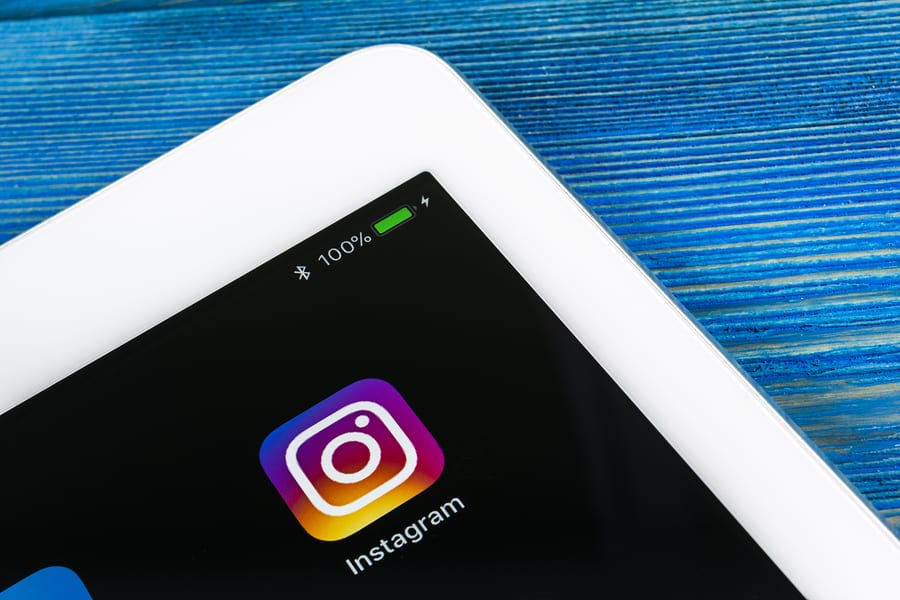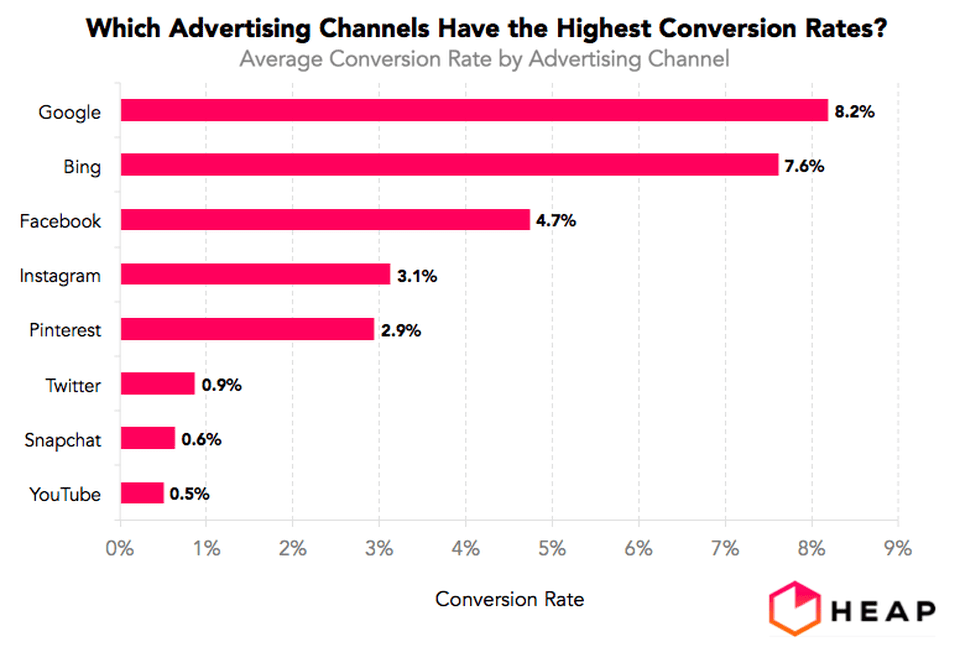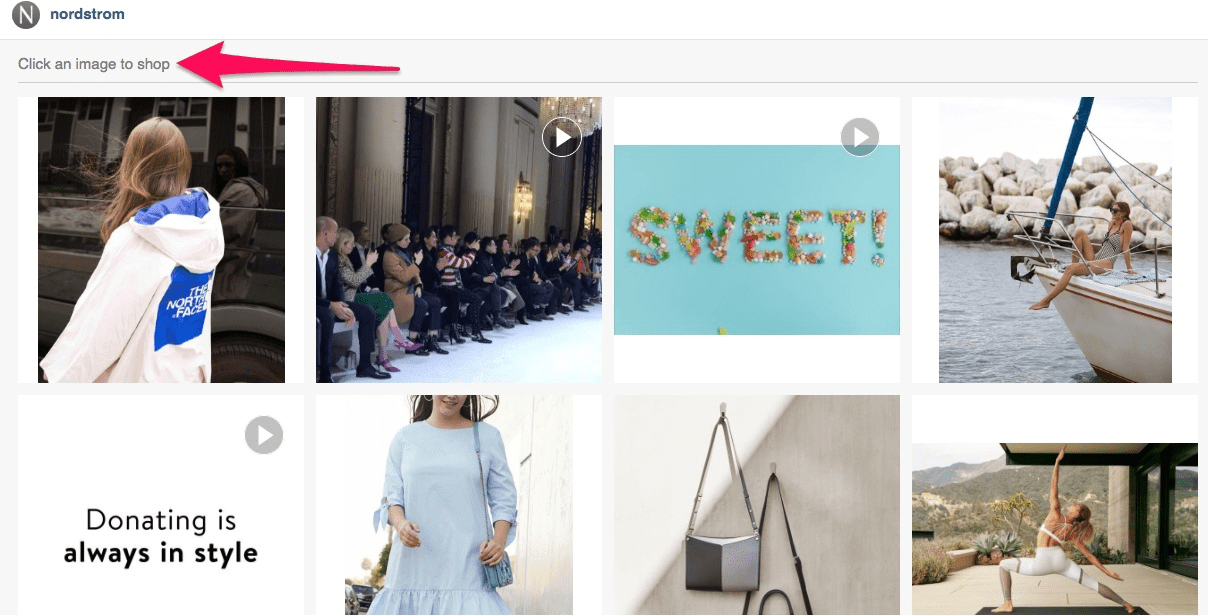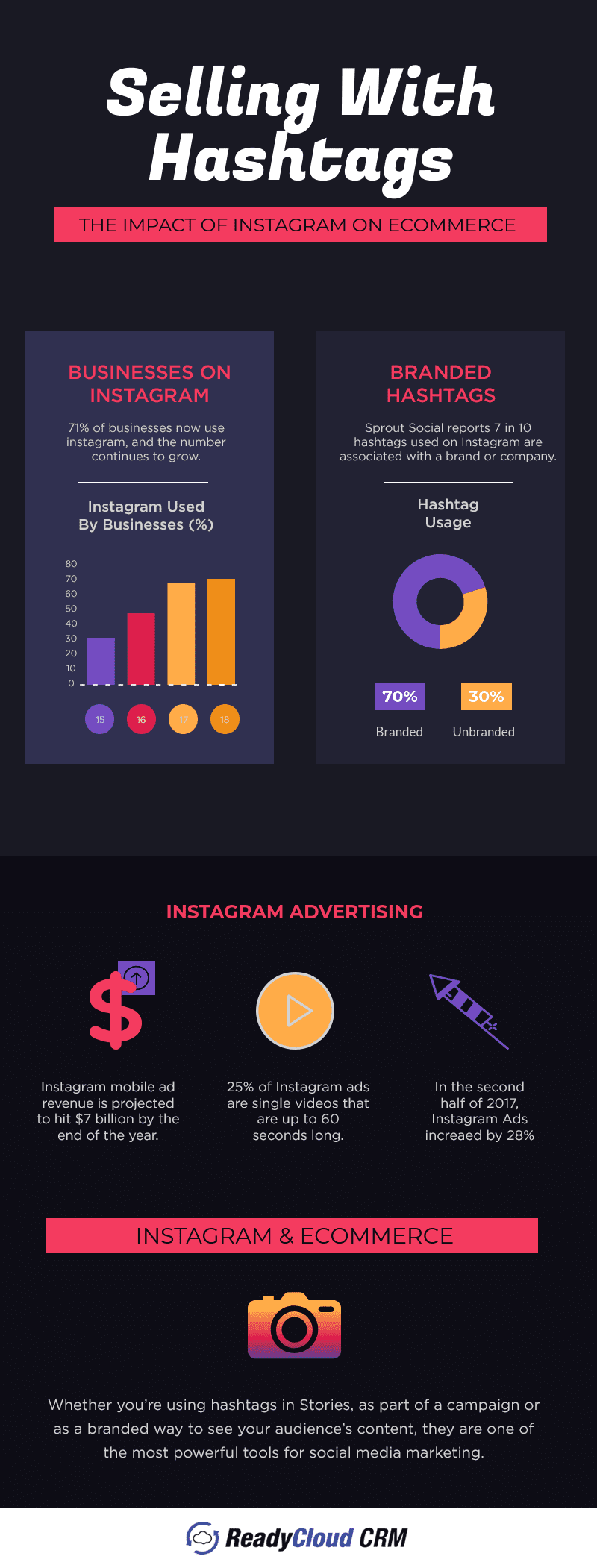19 Reasons Instagram is the New Face of Social Commerce

As the online world came to realize, the platform’s visual-driven and overall positive nature made it unique. Nine years later, Instagram is a powerhouse in its own right, surpassing Facebook in categories like engagement, teen usage and growth.
Likewise, the app’s ecommerce potential wasn’t predicted, but Instagram is now a massive platform for online retailers to market, showcase and sell their products. Last year saw the introduction of several shopping-focused features, and a standalone shopping app is rumored to be in the works.
As you can see, Instagram is arguably the new face of social commerce. But why?
Read on to learn more.
What is Social Commerce?
If you’re not using social commerce for your online store, now is as good of a time as any to get started. By harnessing the power of social media—and its billions of users and their purchasing power—you can reach and sell to a whole new audience without spending a dime.
Take a look at these recent social commerce statistics:
- Retail ecommerce sales are projected to grow to $4.5 trillion by 2021.
- 80% of internet users shop online.
- 71% of shoppers prefer to shop online.
- 87% of customers say social media has helped them make a purchasing decision in the past.
- 25% of consumers look to social networks for advice when they go clothing shopping.
- 90% of people who follow a brand via social media will try to reach out to said brand.
- The top 500 online retailers earned $6.5 billion from social commerce in 2017.
- 67% of Millennials would rather shop online than go to a physical store.
- 71% of consumers who have had a good experience with a brand on social media will recommend the brand to others.
Social media is not only a tool to display the contents of your online store, but it is also a helpful resource for consumers looking to gather information about your brand and products. Statistics show it’s often the fastest and simplest way to resolve an issue with a customer’s order.
While other platforms are sufficient for social commerce needs, Instagram goes above and beyond with features and capabilities built specifically for ecommerce. These are all of the reasons your online store should be using Instagram, and not just because it’s the new face of social commerce.
No. 1: Instagram for Business is Totally Free
Instagram launched its business profiles in 2016 following a series of rumors, leaks and the like, and businesses that had previously been shooting in the dark were given new tools for advertising and analytics. Even better, switching over to a business profile is totally free, which eliminates risk altogether.
If you’re unhappy with a business profile for whatever reason, you have the option to switch back to a “personal” page with no fees or repercussions.
No. 2: Instagram is not yet Oversaturated
Up from 2016, when an estimated 48.8% of businesses used Instagram, only 71% of businesses use Instagram today. This means it is still an impactful resource for brands, a place where they won’t be drowned out by major players.
No. 3: There Are 1 Billion Users Worldwide
Last summer, Instagram hit its milestone of one billion active users on the platform worldwide. While its base is not as massive as its parent company, Facebook, it still has a huge chunk of the market share. Consider this: 35% of online adults use Instagram, further breaking down to 30% of men and 39% of women with the gap closing every year.
Check out this chart for more details:

Perhaps more importantly for e-tailers, Instagram users have money to spend on their products. According to Hootsuite:
- 30% earn up to $30K/year
- 42% earn $30K – $50K
- 32% earn $50K – $75K
- 42% earn $75K
No. 4: Instagrammers Spend $65 per Transaction on the App
According to Shopify, the average order value for customers referred from Instagram is $65.00. Taking even a fraction of the one billion users into account, that’s a lot of money on the table for online retailers who aren’t leveraging the platform.
Even when consumers aren’t buying directly through the app, 72% of users say they have bought a product they saw on Instagram. And analytics think tank Heap found that Instagram has a 3.1% conversion rate, the second highest rate of any social media channel.

No. 5: Highest Engagement of any Social Platform
Social media algorithms dominated the conversation last year, and you probably noticed a decline in organic traffic across your social channels, too. However, Instagram remains a platform where you can reach your audience even in 2019. It has the highest engagement rate on posts. It may seem low, but Instagram posts consistently see at least 1% engagement, which dwarfs the .59% and .13% engagement rates on Facebook and Twitter posts, respectively.
When you translate these numbers to cash, ecommerce expert Neil Patel has reported an engaged follower on Instagram is actually worth more than an engaged Facebook follower by about $10.
No. 6: Advertising Isn’t Just About Cost
Did you know Instagram now makes up more than one-third (36%) of Facebook’s total ad revenue? This might intimidate small businesses that don’t want to blow their budgets on advertising, but Instagram relies on more than budget for its advertising. It’s a low-cost way to give social media ads a try and really focus in on fine-tuning the campaigns that drive the most revenue.
Instead of prioritizing big budget accounts, Instagram wants to give each user the best, most relevant experience on its app. Advertisers participate in an auction system, and the winning bid is the one that provides the most value for the user. E-tailers can use the system to their advantage by bidding low and targeting the most relevant niche groups to get the most out of their budgets.
No. 7: Instagram is Designed for Visuals
A large part of Instagram’s appeal is its visual nature. There is less pointless chatter, “fake news” and other content that consumers are frustrated by on other social channels, and it is highly consumable because of the human brain’s capacity for storing visual information.
Brands should (and do) use Instagram strategically by creating a feed, or profile page, that reflects their voice and aesthetic. By using a consistent color palette or evoking a cohesive theme, businesses can harness the power of recall. Consumers will see an image and immediately associate it with that brand, which stays in their minds for next time they shop online.
No. 8: Instagram Has Integrated Shopping
It’s common knowledge that consumers like to shop online for the convenience factor, and that fact applies in social commerce as well. Instagram rolled out shoppable posts to brands over the past year, and users can quickly order the products they see in a photo with just a few taps. By eliminating the need to switch gears to buy within an internet browser, Instagram has streamlined the process.

Some online retailers are taking the convenience to the next level by allowing customers to pay with alternate methods, such as WhatsApp, text message or email. Dirty Lemon is a well-publicized pioneer of alternate payments—its wellness drinks are available to purchase via text message. Similarly, apparel brands may allow users to #CommentToOrder, and they’re then emailed an invoice.
There are also third-party apps, too, such as Like2Buy and Later that create a shoppable feed. Because Instagram doesn’t support direct links in posts, the one link in a profile’s bio is valuable real estate. These apps serve as a homepage where users can visit the Like2Buy/Later link, tap an image, and be taken to a product page or whatever is associated with that image.
No. 9: Relationships Improve with Social Engagement
The social part of “social media” is often forgotten by brands, but it’s a foolproof way to build relationships with customers. Here at ReadyCloud CRM, we know the importance of building and maintaining relationships with the very people you’re trying to sell to, and Instagram can help facilitate the process. Whether you’re responding to direct messages or replying to comments, each interaction with a consumer creates trust and a sense of reliability.
Consumers, especially Millennials and Gen Zers, want to be recognized by brands, and social media is fast, low-cost way to reach them.
No. 10: Instagram is Meant to be Playful
Because Instagram isn’t news-focused or designed for professional networking, the platform is more playful than its fellow social channels. There are many ways to go about it, but e-tailers can use Instagram to show a more human side of the brand.
Here are some ideas for humanizing your online store using Instagram:
- Use Stories for behind-the-scenes content.
- Go live during a product launch, trade show or other relevant event.
- Spotlight employees or teams to showcase company culture.
- “Speak” using informal language; if it makes sense for your brand.
- Post relevant memes, screenshots of tweets or quotes to break up a cluttered feed.
No. 11: Stories Encourage Interaction
Speaking of Stories, they are an effective tool to keep Instagram users coming back to your profile. These sets of images and videos are ephemeral, so they disappear 24 hours after posting and create FOMO (fear of missing out) in consumers. Instagram stories are incredibly popular; 400 million of them are posted every day, and they’re the most likely reason users spend more time on Instagram than in previous years.
For your most popular or your highest converting Stories, the Highlights feature allows you to “pin” Stories to your profile for viewing past the 24-hour mark. Brands use Highlights to showcase new product lines, events, flash sales or anything customers should see whenever they visit the company’s profile.
No. 12: The App Supports Customer Service
Visual marketing is the most obvious use for Instagram, but the app is also a useful tool for customer service. There are almost always users commenting on posts and lamenting order issues, or businesses will receive queries via direct messages. It’s not uncommon. In fact, 50% of customers say that customer service on social media has made it easier to ask questions and have their issues resolved online. In today’s on-demand economy, customer service is no different. Instagram (and other social channels) makes it possible.
No. 13: You Can Create Multiple Pieces of Content for Each Product
It’s hard to believe Instagram started out only allowing users to post square photos. Now, along with the ability to resize images, the platform supports video, Boomerangs (a type of video that progresses forward and then backward,) and swipe-able carousels that comprise up to ten images.

With such a wide variety of supported visuals, online retailers can create endless content. Post a mix of product shots, lifestyle photos and videos showing your products in use for the full range of content. And don’t discount live video. Your followers will be notified whenever you go live.
No. 14: Influencers Live on Instagram
With all the drama surrounding Fyre Festival, influencer marketing is under intense scrutiny. When done right, brands with legitimate products or services will pay an Instagram user with a large and/or engaged follower base to promote those products or services, which is disclosed in the influencer’s post. The stereotypical influencer is a young woman selling a wellness product, but there are influencers in many industries. What do they all have in common? They do their business on Instagram.
These findings from the Digital Marketing Institute show the impact of influencer marketing:
- 70% of teens trust influencers more than traditional celebrities.
- 49% of consumers rely on an influencer’s advice before purchasing a product.
- Influencer marketing campaigns earn more than $6 for every dollar spent.
- The influencer marketing industry is projected to be worth $10 billion by next year.
No. 15: Instagram Is a Gold Mine for User-Generated Content
Instagram is where consumers post photos of their purchases, so it’s a gold mine for finding authentic images of your products “in the wild.” Especially for brands that encourage the use of specific hashtags, these images are easy to find with a bit of searching. And that authenticity automatically serves as social proof—they’re visual product reviews that consumers trust.
Similarly to the way teens trust influencers more than celebrities, Millennials trust UGC 50% more than advertisements and other types of media.
No. 16: New Features Are Always Being Released
Last year, Instagram seemingly released a new feature every month. Some were small, but high-impact changes like the new algorithm and the introduction of shoppable posts made waves.
As Instagram optimizes its platform for ecommerce, now is the time to start using a business profile, so you’ll be the first to know when it undergoes an advantageous update.
No. 17: Encourage Followers with Exclusive Content
Another way to encourage Instagram followers is the use of exclusive content on your business profile. By making highly valuable content only available on one channel, you create the same FOMO as Stories and will attract more consistent traffic. Some ideas are digital coupons, information about flash sales or even exclusive products just for your Instagram followers.
Don’t forget to set up customized links, so you can track the success of your exclusivity in Google Analytics.
No. 18: Posts are Easy to Share
Instagram makes its posts easily shareable, so your followers can do the work for you. To increase your reach, encourage followers to tag friends in comments or share posts to their Stories. These are standard practices for Instagram contests, where each comment or Story share is an entry, meaning it’s allowed by the platform.
No. 19: A Standalone Instagram Shopping App is in the Works
Despite all its new shopping features on the platform, the rumors are still flying about a standalone Instagram shopping app. Instagram has yet to comment, but consumers are speculating the app could be called IG Shopping and will show users collections from the brands they follow on Instagram’s social app.
The Final Scoop
Instagram is an often-overlooked platform for online sellers, but it has a robust set of ecommerce features on top of its social media capabilities that allow e-tailers to connect with consumers. Its visual structure is perfect for showcasing products in multiple ways, and the ease of tap-and-buy adds extra convenience to superfluous online shopping experience. Best of all, a business platform is completely free, and advertising is low-cost and low-risk.
Clearly, the social media channel is an effective tool with massive potential for online sellers, and it’s poised for further growth. Instagram’s title of the new face of social commerce is well deserved.
Need even more info? We’ve got you covered with this Instagram infographic below.

Share On:







